Webtoon Review: Yumi’s Cells, Chapters 1 – 86
Today I wanted to review a little gem of a series I have been following which comes out on LINE Webtoon twice a week. This series may not particularly stand out at first, but it really grows on you the more you read it. I must admit I have become quite fond of it at this point and look forward heartily every week to the days it comes out. Without further ado: Yumi’s Cells!
Overview
| Name: | Yumi’s Cells |
| Author: | Lee Dong-gun |
| Genre: | Comedy, Josei, Romance, Slice of Life |
| Summary: | A story of Yumi and her brain cells. |
| Links: | Baka-Updates profile Read Yumi’s Cells in multiple languages on LINE Webtoon |
Artwork
The artwork in this webtoon is very old-school cartoony. It is still full-color but colors are generally just straight-up blocks of color, no gradients, no shading, no fancy lighting… in short don’t expect this to be a wonderful feat of artistic excellence.
WITH that said, however, don’t be too put off by the art. In my opinion the art style actually suits the story rather well. Yumi’s Cells has a lot of relatable comedy, and while romance and drama does brew in the background, the main story is about her brain cells and events in the “real” world crawls by at a snail’s pace. A single thought can take half an episode of cells scrambling over one another to complete, and the hilarious and crazy things they do is what Yumi’s Cells is really about.
In this context, the cartoony art style makes it much easier to think of them as “brain cells” and imagine that your own mind is composed of these little buggers rushing around & trying to make things work, rather than trying to imagine that a bunch of beautiful and attractive bishoujo and bishounen are living in a gorgeous village inside of your head, which I at least would have much more trouble doing.
Story
As I mentioned above, the “real life” story about Yumi and her office romance moves rather slowly. But while there’s not too much to the actual plot – pretty standard office/love drama – don’t be put off by it! Because what goes on inside Yumi’s head is gold.
No, I’m serious. Those little brain cells are absolutely hilarious. Just take a look at Fashion Cell, to your right.
The tiniest, most insignificant thing on the outside causes total mayhem inside Yumi’s brain. Cells fight for control, tackle each other, throw tantrums, even go into a coma for years due to a traumatic event. And there are tons of them! Emotional Cell, Hunger Cell, Art Cell, Cheapskate Cell… to name a few. The cells aren’t always the same, either. In Woong (male character)’s head, there lives a Beard Cell which Yumi clearly doesn’t have, while Woong also seems to lack cells such as Shower Cell and Manner Cell which are frequently present in Yumi.
Comparison with Inside Out
Creating a metaphor for the complex inner workings of the brain is not a new idea, and in fact Disney/Pixar just released a movie in 2015 entitled Inside Out that tries to do exactly the same thing. Inside out is a great movie, and if you haven’t seen it yet I highly encourage you give it a go. However, in terms of breaking down how the brain works, I would venture to say Yumi’s Cells does an even better job than Disney, for multiple reasons.
Note: I am no expert on the brain, and much of the information below references this article on Inside Out by Steven Novella, a clinical neurologist and assistant professor at Yale University.
The Brain is Distributed
Inside Out portrays the brain as being controlled primarily by five emotions at a control panel. According to Dr. Novella, however:
There does not appear to be any equivalent of a command center or control panel in our brains. There is no “seat of consciousness” or “global workspace.” Rather, consciousness appears to be highly distributed, with each part of the brain contributing its little bit.
I tend to agree. The chaotic little village of Yumi’s Cells, with different cells all over the place clamoring for control, seem to me on a personal level much more realistic. There’s cells all over the place, and the things that affect Yumi are composed of many different parts. There are cells guarding the door to her heart, cells off in a factory somewhere detoxing her liver, cells imprisoned by other cells… etc etc. and different cells exercise control over Yumi’s body at different times.
Emotions vs Instincts
Inside Out makes it seem like the emotions make all the important decisions, with everyone else largely operating the subconscious. But what about the rational, philosophical part of our brain? Certainly Plato is not making all his decisions via emotional thought! On top of that, basic needs also drive our decisions, such as hunger, a full bladder, lack of sleep… etc. As Dr. Novella put it:
If I were designing a cutesy Inside Out – like metaphor for brain function, there would be multiple distributed “control panels.” There would be a raucous committee all simultaneously clamoring for control. On the lower deck would be the emotions, and next to them basic drivers like hunger. On the upper deck would be various aspects of executive function and the higher cognitive functions. These elements would be in frequent conflict, sometimes emotions winning out, at other times executive function controlling, or at least ameliorating, the emotions.
Yumi’s Cells does an excellent job of this. Hunger Cell, a basic driver, Rational Cell, a higher cognitive function, and Emotional Cell all live together in proximity and fight over control, with different cells winning at different times. In contrast, Inside Out jumbles feelings and rational thought together by having the emotions debate logically.
Brain to Body or Body to Brain?
The correct answer is: both. While it is true that our thoughts and emotions lead us to take certain actions, the reverse is also true. As Dr. Ruth Bettelheim points out, our bodies sometimes respond before our brain even has time to act (e.g. think of a point in time when you jerked back inadvertently in shock), and in fact, the physical behavior of our bodies can cause a certain emotional reaction in the brain. This is why you’ll often hear personal development coaches tell you to watch your body posture when you walk, to hold your head high and take big strides – because it actually helps you feel more confident.
Inside Out is missing this “feedback loop” from body to brain. In Inside Out, actions don’t happen until an emotion pulls the correct lever, which is correct some of our behavior but not all. So how does Yumi’s Cells handle it?
Well, Yumi’s Cells definitely has the brain-body feedback loop. In one scene, several cells are puzzled as to when Yumi put tissues in her purse, and Anxiety Cell reveals that she put them there because she was worried Yumi would get booed on by a bird. At another point, the cells are confused as to why Yumi’s hand is touching a coworker’s hand, and Naughty Cell reveals that he snuck into the Left Hand Control Room to make it happen. It’s less centralized, but more or less a similar concept.
What gets interesting is how external actions affect the internal environment beyond the control of the cells. For example, a terrible event results in a flood that sweeps many cells away, and a good event results in the cells floating and feeling giddy. In one instance, a suspicious event causes a plant of suspicion to grow inside Yumi, and the surviving cells have to work their hardest to defeat it or get poisoned. IMO this is a good representation of the body-brain feedback loop, where in certain situations “our senses, hormones, muscular and neural systems work together to save our lives, taking action before we have time to think,” and it is only after that the brain has some modicum of control with which to cope with the situation.
Characters
Yumi
 The main character of the series. A cute, petite girl in her late twenties who works at a regular office job and has a crush on her younger coworker, Wook. She once had a boyfriend, but they broke up and she is now single and somewhat lonely. The story is primarily centered around Yumi’s day-to-day life and the goings-on of the cells in her head. Sitting on her shoulder is Hunger Cell, one of Yumi’s stronger cells because she loves to eat!
The main character of the series. A cute, petite girl in her late twenties who works at a regular office job and has a crush on her younger coworker, Wook. She once had a boyfriend, but they broke up and she is now single and somewhat lonely. The story is primarily centered around Yumi’s day-to-day life and the goings-on of the cells in her head. Sitting on her shoulder is Hunger Cell, one of Yumi’s stronger cells because she loves to eat!
Wook & Woong

 Wook is Yumi’s younger coworker who is both handsome and kind. Yumi has a crush on him, though Wook doesn’t seem to get the hint. Woong is Wook’s friend who is more unkempt and disheveled than Wook, and eventually comes to play a big part in the series. From time to time we get to see Woong’s cells in his head.
Wook is Yumi’s younger coworker who is both handsome and kind. Yumi has a crush on him, though Wook doesn’t seem to get the hint. Woong is Wook’s friend who is more unkempt and disheveled than Wook, and eventually comes to play a big part in the series. From time to time we get to see Woong’s cells in his head.
Ruby & Sia

 Two girls who are always trying to cockblock Yumi. Ruby is Yumi’s coworker who tends to resort to devious and dirty tricks to get her way. Sia is not as directly aggressive as Ruby (at least so far she hasn’t been), but still manages to get in the way enough to be a major irritation. Both have their own backstories and their own set of cells.
Two girls who are always trying to cockblock Yumi. Ruby is Yumi’s coworker who tends to resort to devious and dirty tricks to get her way. Sia is not as directly aggressive as Ruby (at least so far she hasn’t been), but still manages to get in the way enough to be a major irritation. Both have their own backstories and their own set of cells.
Scanlation Quality
As always, if you can read Korean, then go for it. However, for those who can’t, I don’t have any major quibbles with the official translations over at LINE Webtoon except that in one chapter they mistranslated Sia’s name as “Sei.”. There haven’t been any major translation errors that I’ve seen, and Yumi’s Cells has pretty simplistic art without much fancy text overlays, sound effects, etc., so the scanlation in turn loses very little when converted to English. And it comes out twice a week, which is a big plus!
Note: The Korean version is a little bit ahead, but it also comes out, so the English version is consistently ~10 chapters behind.
Reread Value
Yumi’s Cells isn’t the kind of series I’m dying to reread (unlike About Death, which has some great chapters that I come back to again and again) but at the same time it doesn’t lose its appeal when you do decide to reread it, since a lot of it is quite clever and the comedy/mental image of the little cells can be very endearing. You probably will remember what happened in Yumi’s love life, but I doubt you’ll remember what the cells were up to every step of the way!
Similar Works
As I mentioned before, definitely check out the movie Inside Out if you’re interested in metaphors of the brain. Also check out this wonderfully animated short that was created ages before Inside Out but is oddly similar. This 2-minute short film also explores similar themes.
The same author also has another completed series called A Bittersweet Life, which is a collection of stories about singles and couples. The romance is light and insightful, and if you enjoyed Yumi’s Cells I encourage you to give it a try.
Now loading…
If you’re looking for light, slice-of-life romance that portrays the subtleties of social interactions and character dynamics very well (without extreme exaggeration and/or flat characters), try Cheese in the Trap or Orange (Takano Ichigo). Note that both are with student settings and not working adults.
For lighthearted romance with working adults, try The Stories of Those Around Me.
Lastly, if you just want something cute, funny, and everyday, try Smile, Brush by Waroo.
Conclusion
A feel-good, clever and relatable manhwa. Definitely more female focused but once we get deeper into the series the male perspectives are great as well (the bear chapter was on-point! hahaha). Something to read at any time. I would best recommend it if:
- You don’t have anything to do
- You want to relax and enjoy some light comedy
Would not recommend only if you’re looking for something specific, in particular heavy action/fighting or intense thriller. Otherwise, give it a go when you’ve got some down time!

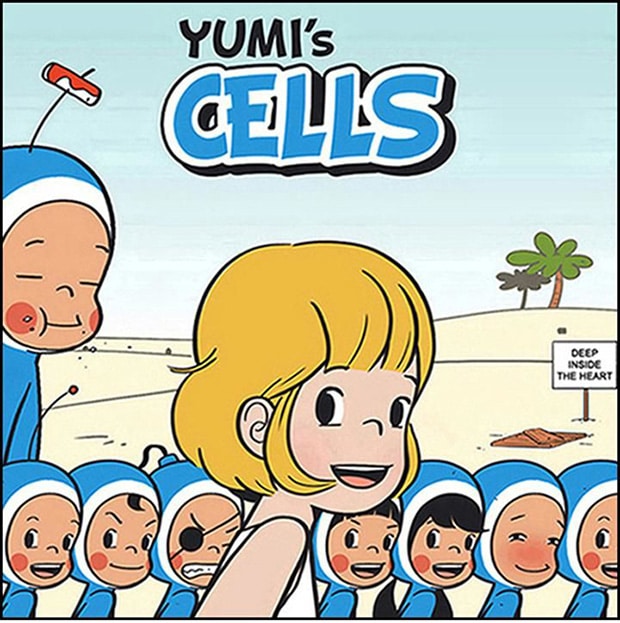

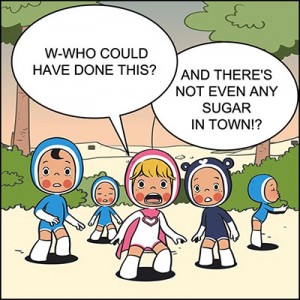
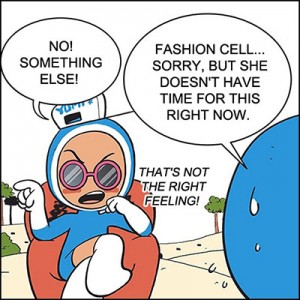
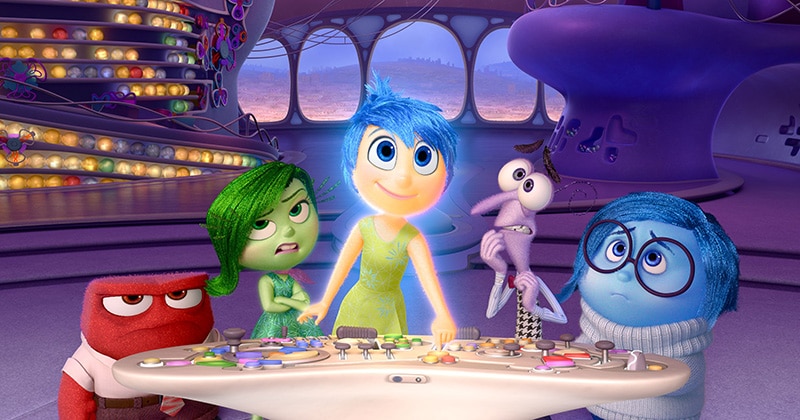
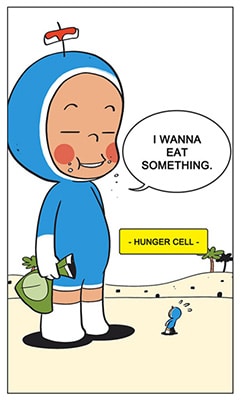
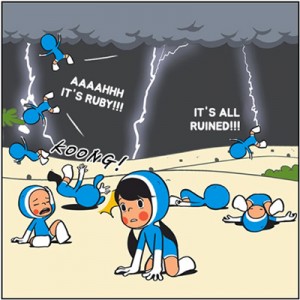
A very interesting read .I stumbled onto this webtoon by accident and I’ve been devouring chapters one by one.The way all the cells are fighting for supremacy is soo cute ,but in a way realistic too,mirroring how different emotions are constantly battling it out in our brains.
Yumi s Cells is not a ZOMG READ THIS BEFORE YOU DIE type deal but it is something that may make your perspective on life a bit more humorous.